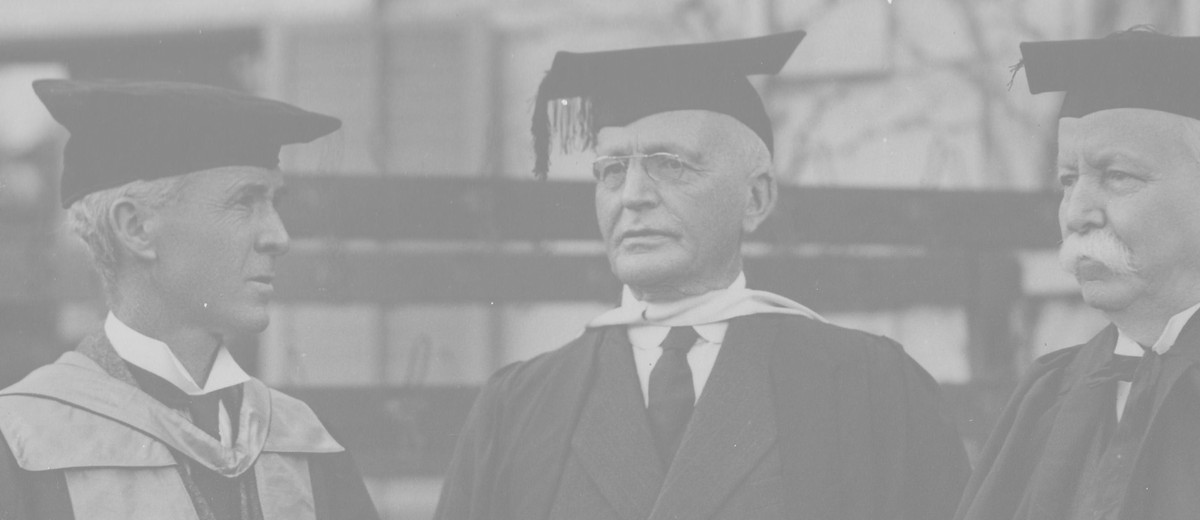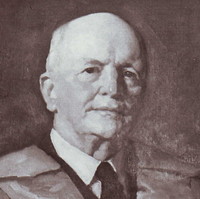Person
ContributeWilliam Mitchell was born in Inveravon, Scotland, in March 1861, the son of hill-farmer Peter Mitchell and his wife Margaret (née Ledingham). He entered the University of Edinburgh in 1880, graduating M.A. in 1886 and D.Sc. in 1891. He was a Lecturer in Moral Philosophy at the University of Edinburgh (1887-90) and Lecturer in Education at University College, London (1891-94).
In 1894 he became the Hughes Professor of English Language and Literature and Mental and Moral Philosophy at the University of Adelaide. He soon established himself as a respected intellectual and educational figure. In 1896 he was elected to the Council of the University and continued as a member for fifty-two years. On 18th January 1898 he married Marjorie, the daughter of Robert Barr Smith, and they had two children.
William Mitchell was the Vice-Chancellor of the University of Adelaide from 1916 to 1942 and then Chancellor until 1948. He made many contributions to scholarly life, obtaining significant grants for the University, founding the chair of biochemistry and spending large sums on library acquisitions. His administration also saw the establishment of the Dental School, the Waite Agricultural Research Institute and the chair of economics. He believed strongly in the importance of a broad education that involved not just the acquiring of knowledge but also aesthetic, moral and intellectual development. In 1927 he was appointed K.C.M.G. for his services to South Australia.
Mitchell was an outstanding philosopher. He published his first paper in the journal Mind while still an undergraduate and later wrote two discursive and wide-ranging books, Structure and Growth of the Mind (1907), which dealt with mind and content, philosophical psychology and neuroscience, and The Place of Minds in the World (1933), which covered issues of the mind and the philosophy of physics, including the relatively new area of quantum mechanics. According to one reviewer, the latter ‘carried obscurity to the point of outrage’. There are surviving manuscripts of his last book, The Power of the Mind, though it was never published. He was the first, and to date the only, philosopher working in Australia to give the Gifford Lectures at the University of Aberdeen (1924 and 1926).
His philosophical views were influenced by the British idealists and by the Scottish ‘common sense’ theorists. However, he also had a strong interest in empirical work, in particular the neuroscience and psychology of his day and he was an early proponent of what is now called cognitive science. His philosophical views can be said to mark a transition between the idealist traditions brought to Australia in the early part of the nineteenth century and the radical materialist views which followed.
As a teacher and academic, Mitchell was highly regarded. He was something of a polymath, being engaged to teach economics and education as well as philosophy, psychology and literature. For this reason he described his professorial chair as being more like a sofa. He was also unpretentious. It is said that, as Vice-Chancellor, he had no need for an office. If he wished to see colleagues on administrative matters, he would see them in their own rooms. His considerable abilities as an academic, administrator and social commentator led Duncan and Leonard, in The University of Adelaide, 1874-1974, to describe Mitchell as ‘the nearest approach to a philosopher-king the academic world has ever seen’.
Sir William Mitchell died on 24th June 1962 and was cremated, his ashes being placed near his wife’s grave in Mitcham Cemetery. The Mitchell Building of the University, on North Terrace, is named in his honour and a portrait of him hangs in its great hall.




CommentAdd new comment
Quickly, it's still quiet here; be the first to have your say!